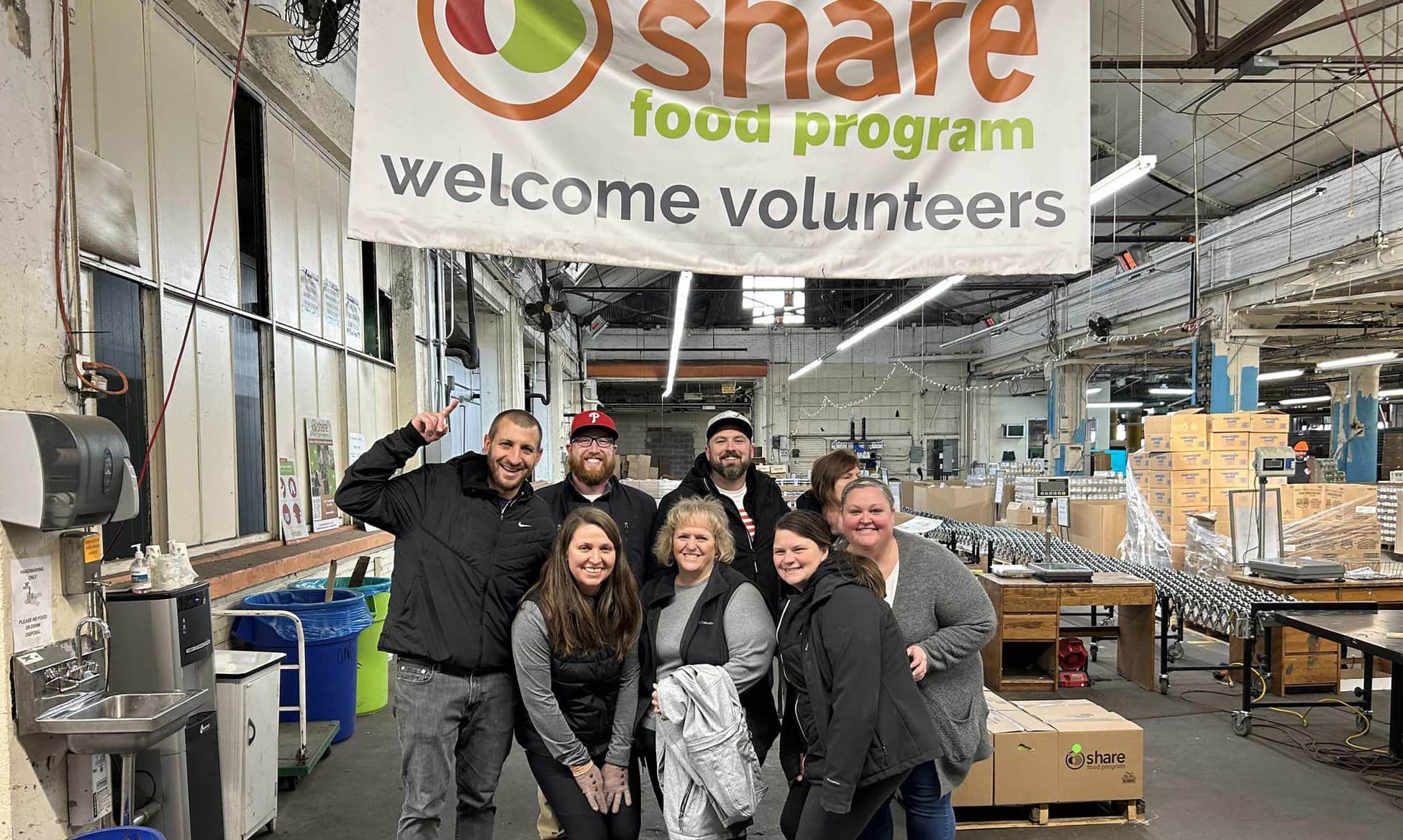Share for Food is a noble concept that encourages the sharing of food with those in need, fostering a sense of community and compassion. From food banks to community kitchens, various initiatives have emerged to address food insecurity and promote equitable access to nourishment.
Throughout history, food sharing has played a crucial role in human societies, strengthening bonds and providing sustenance during times of scarcity. Today, it continues to be a vital lifeline for many, offering hope and dignity to those facing food insecurity.
History of ‘Share for Food’
The concept of sharing food has deep roots in human history, dating back to the earliest hunter-gatherer societies. In these communities, sharing food was essential for survival, as it ensured that everyone had access to sustenance. Over time, food sharing evolved into a social and cultural practice, with different societies developing unique customs and traditions around it.
Notable Food Sharing Initiatives
Throughout history, there have been numerous notable food sharing initiatives that have played a significant role in addressing food insecurity and promoting community cohesion. One such initiative is the Food Bank network, which was established in the United States in the 1960s.
Food Banks collect surplus food from grocery stores, restaurants, and other sources, and distribute it to local food pantries and soup kitchens, which then provide it to individuals and families in need.
Another notable initiative is the Share Our Strength organization, which was founded in 1984. Share Our Strength works to end childhood hunger in the United States through a variety of programs, including the No Kid Hungry campaign. No Kid Hungry provides grants to schools and community organizations to help them provide meals and snacks to children in need.
Types of ‘Share for Food’ Programs

Food sharing programs encompass a wide range of initiatives aimed at addressing food insecurity and reducing food waste. These programs operate through diverse models, each serving specific populations and addressing unique aspects of food distribution.
Food Banks
Food banks are central hubs that collect surplus food from various sources, such as grocery stores, restaurants, and food manufacturers. They sort and repackage the food before distributing it to a network of partner organizations, including soup kitchens, food pantries, and shelters.
Food banks play a crucial role in providing emergency food assistance to individuals and families in need.
One notable example is the Feeding America network, the largest hunger-relief organization in the United States. Feeding America operates a network of over 200 food banks and 60,000 partner agencies, distributing billions of pounds of food annually to millions of Americans facing food insecurity.
Community Kitchens
Community kitchens are facilities that provide free or low-cost meals to individuals in need. They typically operate on a drop-in basis, serving hot meals in a communal setting. Community kitchens often cater to individuals experiencing homelessness, poverty, or other social challenges.
An example of a successful community kitchen is the San Francisco Marin Food Bank’s Kitchen Program. The program provides over 1 million meals annually to individuals in need, offering nutritious and affordable dining options in a safe and welcoming environment.
Meal Delivery Services
Meal delivery services provide home-delivered meals to individuals who are unable to access food due to physical limitations, transportation issues, or other barriers. These services typically offer a range of meal options tailored to specific dietary needs and preferences.
One example is the Meals on Wheels program, which delivers nutritious meals to homebound seniors and individuals with disabilities. Meals on Wheels serves over 2.4 million meals annually, enabling seniors to maintain their independence and live in their own homes with dignity.
Challenges and Solutions in ‘Share for Food’
Food sharing organizations face numerous challenges, including funding, logistics, and food waste. Funding constraints limit their ability to expand programs and reach more people in need. Logistics, such as transportation and storage, can be complex and costly. Food waste is a significant concern, as surplus food that cannot be distributed may end up in landfills.
Innovative solutions and best practices have emerged to overcome these challenges. Organizations are exploring partnerships with food businesses, leveraging technology for efficient food distribution, and implementing creative strategies to reduce food waste.
Funding
- Partnerships with Food Businesses:Collaborations with grocery stores, restaurants, and food manufacturers can provide food donations and financial support.
- Government Grants and Funding:Seeking grants and funding from government agencies dedicated to hunger relief and food security.
- Crowdfunding and Online Donations:Utilizing online platforms to raise funds from individual donors.
Logistics
- Efficient Transportation Systems:Optimizing transportation routes and utilizing refrigerated vehicles to ensure timely and safe food delivery.
- Cold Storage Facilities:Investing in cold storage facilities to extend the shelf life of perishable food items.
- Technology for Distribution Management:Employing software and mobile applications to streamline food distribution processes and reduce waste.
Food Waste, Share for food
- Food Rescue Programs:Partnering with food businesses to collect and distribute surplus food that would otherwise go to waste.
- Composting and Food Digestion:Implementing composting programs to convert food waste into nutrient-rich soil amendments.
- Education and Awareness Campaigns:Raising awareness about food waste and promoting sustainable practices among donors and recipients.
Impact of ‘Share for Food’ on Communities
Food sharing programs have a profound impact on communities, addressing food insecurity, promoting health, and fostering social cohesion. These programs provide a lifeline for those in need, ensuring access to nutritious food and improving overall well-being.
Food security is a critical issue in many communities, with a significant portion of the population struggling to access adequate and affordable food. Share for Food programs help alleviate this problem by providing food to those who would otherwise go hungry.
Studies have shown that these programs can significantly reduce food insecurity rates, ensuring that individuals and families have the sustenance they need to thrive.
Health Benefits
Beyond addressing food insecurity, Share for Food programs also promote health and well-being. Access to nutritious food is essential for maintaining a healthy weight, preventing chronic diseases, and improving overall physical and mental health. Share for Food programs provide a variety of fresh fruits, vegetables, and other healthy foods that contribute to a balanced diet.
Social Cohesion
In addition to their nutritional benefits, Share for Food programs also foster social cohesion within communities. These programs often involve volunteers and community members working together to collect, sort, and distribute food. This shared experience creates a sense of belonging and strengthens community bonds.
Share for Food programs also provide opportunities for people to interact with others who may be facing similar challenges, fostering a sense of empathy and support.
Stories of Impact
The positive impact of Share for Food programs is evident in the stories of individuals and families whose lives have been improved through their services. One such story is that of Sarah, a single mother with two young children. Sarah was struggling to make ends meet and often had to choose between paying rent and buying groceries.
Through a local Share for Food program, Sarah was able to access free food, which allowed her to feed her children healthy meals and focus on other important expenses.
Share for Food programs make a tangible difference in the lives of countless individuals and families. By addressing food insecurity, promoting health, and fostering social cohesion, these programs contribute to stronger and more vibrant communities.
Global Perspectives on ‘Share for Food’

Food sharing practices vary widely across different countries and regions, shaped by cultural, religious, and economic factors. In some cultures, sharing food is a deeply ingrained social norm, while in others it may be considered less common.
In many collectivist societies, such as those found in parts of Asia and Africa, sharing food is seen as a way to strengthen community bonds and foster a sense of togetherness. In these cultures, it is common to share meals with extended family, neighbors, and friends, and to offer food to guests as a sign of hospitality.
Role of Religion
Religion also plays a significant role in shaping food sharing practices. For example, in many Muslim-majority countries, it is considered a religious obligation to share food with those in need during the month of Ramadan. Similarly, in some Christian traditions, sharing food is seen as a way to emulate the teachings of Jesus Christ, who often shared meals with his disciples and the poor.
Economic Factors
Economic factors can also influence food sharing practices. In low-income countries, where food insecurity is more prevalent, sharing food may be a necessary means of survival. In these contexts, community-based food sharing initiatives often play a vital role in ensuring that everyone has access to adequate nutrition.
International Food Sharing Initiatives
In recent years, there has been a growing number of international food sharing initiatives aimed at addressing food insecurity and promoting global solidarity. These initiatives often involve partnerships between organizations in developed and developing countries, and focus on providing food aid, promoting sustainable agriculture, and supporting community-based food sharing programs.
One example of a successful international food sharing initiative is the World Food Programme’s (WFP) “ShareTheMeal” campaign. Launched in 2015, the campaign allows individuals to donate small amounts of money via their smartphones, which is then used to provide food assistance to children in need around the world.
Future of ‘Share for Food’

The future of food sharing holds exciting possibilities for addressing food insecurity and promoting sustainable food systems. Emerging trends and innovations are transforming the way food is shared, creating new opportunities for collaboration and impact.
One key trend is the increasing use of technology and social media to facilitate food sharing. Online platforms and mobile apps connect individuals and organizations with excess food to those in need, making it easier to redistribute surplus food and reduce waste.
Role of Technology and Social Media
Technology plays a crucial role in expanding food sharing efforts by:
- Providing online marketplaces for food donations and exchanges
- Enabling real-time coordination between food donors and recipients
- Facilitating communication and collaboration among food sharing organizations
li>Tracking food donations and measuring the impact of food sharing programs
FAQ: Share For Food
What are the benefits of sharing food?
Sharing food promotes community, reduces food waste, and provides essential nourishment to those in need.
How can I get involved in food sharing?
You can volunteer at food banks, donate to food drives, or simply share your excess food with neighbors or friends.
What are the challenges faced by food sharing organizations?
Food sharing organizations often face challenges such as funding, logistics, and food waste. However, innovative solutions and best practices are being developed to overcome these obstacles.
